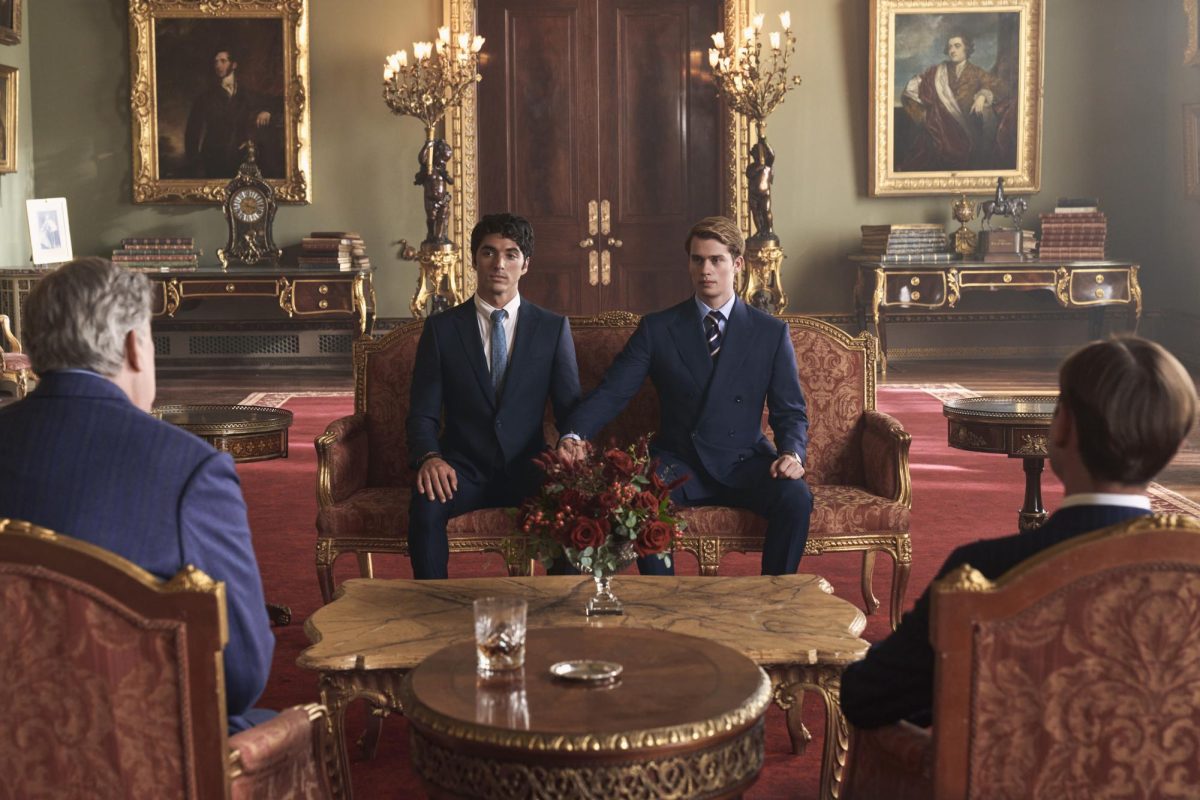Casey McQuiston’s “Red, White & Royal Blue” started its journey as a hit New York Times bestseller novel in 2019 and now has made its debut to Prime Video with its own highly anticipated movie adaptation.
The book and subsequent movie follows the romance between Alex Claremont Diaz (Taylor Zakhar Perez), the First Son of the U.S. President Ellen Claremont (Uma Thurman), and Prince Henry (Nicholas Galitzine), a British Royal.
The two fall in love after meeting to fix an international political scandal, but must keep their romantic involvement private to avoid another public political disaster. These stakes are heightened because Alex’s mother, the President of the United States, is in the middle of her campaign for re-election, and the romance between the two may not be widely accepted.
The chemistry between Zakhar Perez and Galitzine is the core of the movie, and it grows throughout the film in a way that leaves the audience rooting for the couple as we see them transition from rivals to lovers.
The film stands out even more by taking queer romance a step further — by tying in cultural differences.
We see that Alex and Prince Henry come from two unique cultural backgrounds. Alex, with a father who is a Mexican immigrant, faced different difficulties growing up compared to Henry, who was surrounded with privilege and status as part of the British royal family.
Book readers will notice that there were some differences between Casey McQuiston’s novel and Matthew Lopez’s film adaptation, but this should be expected, as films typically are a much more condensed version of the book.
The film would have been better off if certain plot points from the book weren’t removed, including the fact that June — Alex’s sister in the novel — was entirely absent from the movie. In the book, Alex also goes through a journey of self-discovery of his sexuality, whereas in the film, he already knows he is bisexual. These minor changes intensified the struggles the characters face in the novel, and in the film their absence made it feel as if some parts were quite rushed.
However, some changes — such as Alex’s parents still being married, which is not the case in the novel — allowed Alex and Henry and their romance to truly be the center of the film.
Overall, though, the book had better and more nuanced transitions between the passionate, angry and difficult moments, whether it be sexual and intimate scenes or moments of internal conflict. The film seemed to abruptly vacillate between dry and bland moments to more R-rated intimate sexual moments.
Despite its strengths, the movie was oftentimes reminiscent of a Hallmark film. Although the film understandably had less passionate sexual scenes than the book to capture a larger audience, the plot seemed almost too linear and dry at points in terms of character conflict, and it was in those moments that the lack of side characters and storylines were felt most deeply.
However, showcasing a character like Alex, who is Latinx, queer and biracial from the South, adds a deeper significance to the film. While rom-coms tend to appeal to a young adult audience, this film has deeper ties than that — it aims to connect to a wider audience overall and show representation for groups that are typically underrepresented in the film industry.
The film does capture queer intimacy in ways that I’m not sure have been represented ever, and it does it well. Every sexual scene between Henry and Alex was personal, passionate and intimate — it’s clear the cast and crew wanted to show that intimacy is a part of queer relationships as much as the stereotypical heterosexual intimacy audiences are used to seeing on screen.
In situations where most films would take a more depressive route, like moments of forced outing or familial disapproval, the audience sees the characters react mostly with optimism. It ultimately does make the audience feel heartwarmed and inspired to see a film depicting underrepresented characters face adversity in an optimistic nature.



